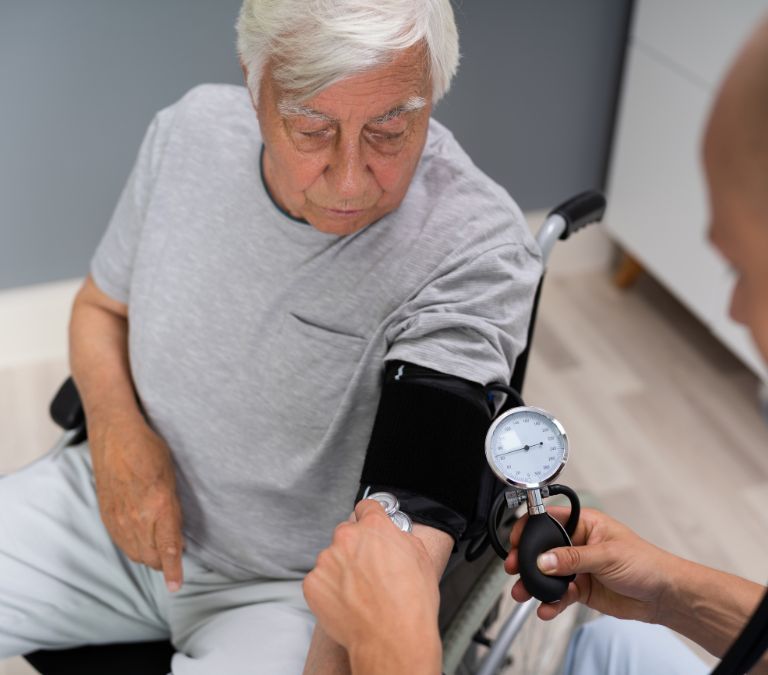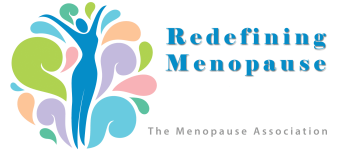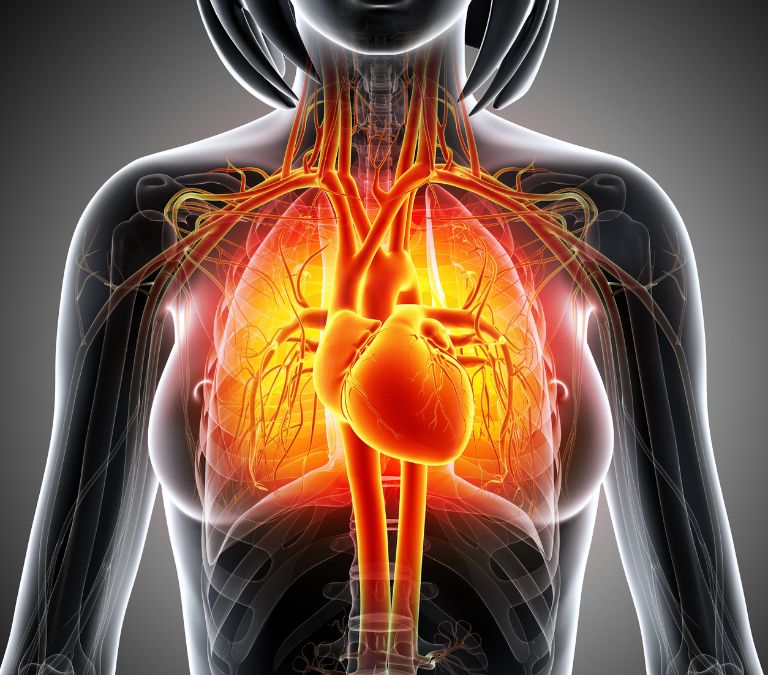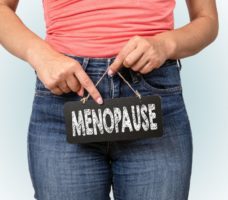Defining the link between menopause and cardiovascular disease.
Since time immemorial, menopausal symptoms have made menopause difficult for many women. On getting to menopause, the body is often plagued with the problem of fluctuating hormones.
During menopause, the ovaries lose their functionality, and as the main producers of estrogen, these sex hormones experience alarming reductions. Due to the reduction in estrogen, the body’s metabolism is altered in certain areas, and problems may arise. The problems caused by the drop in estrogen content are referred to as menopausal symptoms.
Cardiovascular Diseases

Cardiovascular diseases are diseases that affect the cardiovascular system, which includes the heart and the blood vessels. Also known as CVDs, Cardiovascular diseases have become so popular that according to The World Health Organization, more than 30% of all deaths globally are caused by them. It makes Cardiovascular diseases the number one cause of all global deaths.
Most cases of CDVs are caused by the coagulation of fats and damage to the blood vessels found in organs like the kidneys, brain, eyes, and heart. In the US, cardiovascular diseases have become the leading cause of disabilities as well as the leading cause of death.
Menopause and Cardiovascular Diseases
During menopause, the body undergoes changes that can jeopardize your general health. You become more vulnerable to various diseases, and I’m not just talking about hot flashes. Yes, hot flashes can be very discomforting and problematic, but how about your increased risk of severe diseases like cancer and cardiovascular diseases?
In the United States, most women who are regular hospital visitors are in their mid-ages. Today, there are more menopausal women suffering from cardiovascular diseases than any other group of women. It brings us to the question; does menopause cause cardiovascular diseases?
Does Menopause Cause Cardiovascular Diseases?
As stated earlier in this article, most menopausal symptoms aren’t exactly caused by menopause. From puberty to pregnancy to menopause, every significant phase of life comes with its symptoms. Due to the complexity and relatability of the organs in our system, one problem usually leads to other problems. Now let’s lay more emphasis on this statement.
A person who has insomnia may develop migraines and painful headaches. In the long run, migraine may lead to the inability to focus, which can cause unproductivity depression. With this analysis, we can see that one problem, in most cases, comes from an existing one.
Some menopausal symptoms include hot flashes, night sweats, anxiety, osteoporosis, weight gain, bloating, fatigue, vaginal dryness, eye dryness, sleep disorder/irregular sleep pattern, certain cancers, and cardiovascular diseases. While these symptoms have been observed more in menopausal women, studies have shown that not all of these symptoms are directly caused by menopause.
For example, menopause increases your risk of weight gain; it isn’t a leading cause. Eating unhealthy foods and sitting at home while in menopause could make you gain weight. Rapid weight gain may lead to other problems like high sugar, cardiovascular diseases, and sometimes anxiety and moodiness.
While menopause and obesity lead to an increased risk of cardiovascular diseases, other factors also contribute to our vulnerability to diseases like this. Factors like family history of cardiovascular diseases, tobacco use, overuse of alcohol, diabetes, sedentary lifestyle, and general aging could also lead to an increased risk of developing cardiovascular diseases during menopause.
Obesity, Cardiovascular Diseases, and Menopause
The most likely cause of cardiovascular diseases during menopause is obesity. With the fluctuations in levels of hormones in the body, body fat distribution is modified, and weight gain becomes extra easy.
Fat is very important to the body for optimal health and survival. Fat helps provide the body with energy during times of starvation, protects the organs from harm, regulates blood pressure, and helps absorb nutrients. However, fat becomes dangerous when it becomes too much and develops more around the waist and abdominal region.
During your reproductive/childbearing years, your body stores fat in the lower body (buttocks region). On getting to menopause, this mechanism changes, and the location for storing fat moves to the upper body (abdominal region). As the location for storing fat changes, fat becomes more likely to build up in vital organs and blood vessels.
If this process continues for a long period, the arteries can pump fat to the heart, and this can cause the clogging of the blood vessels and the cardiovascular system. In turn, clogging the cardiovascular system could lead to severe diseases like stroke and vascular dementia.
How Menopausal Women Can Reduce the Risk of Cardiovascular Diseases during Menopause

With an increased risk of developing cardiovascular diseases, menopausal women must manage and handle the phase of menopause effectively.
As the world evolves, more treatment options have been available for managing menopause. Today, lifestyle changes have proven to be very effective in preventing cardiovascular diseases during menopause. However, hormone therapy is widely regarded as the best option for preventing cardiovascular diseases caused by menopausal symptoms.
Hormone Replacement Therapy
Hormone replacement therapy is the treatment to help balance hormonal levels in the body.
Abbreviated as HRT, this treatment option involves a process of relieving symptoms of menopause by simply replacing hormones that are at lower levels. HRT is typically taken to reduce the effects of menopausal symptoms on women going through menopause.
HRT helps replace hormones that have become low as a result of menopause. With this, there tends to be some hormonal balance in the body. The fluctuations of vital hormones in the body of menopausal women are the main reasons for so many uncomfortable menopausal symptoms. With HRT, symptoms like hot flashes, night sweats, reduced sex drive, vaginal dryness, and mood swings can be relieved. HRT can also help with osteoporosis problems, which are very common in the postmenopausal phase of life.
HRT is very beneficial to menopausal women. Living with menopause can sometimes be difficult, but with this treatment option, you could go through a smooth menopausal transition without experiencing complications.
With weight gain being an integral cause of cardiovascular diseases, hormone therapy can help reduce our vulnerability to weight gain, which in turn does the same for CDVs.
Side Effects of Hormone Therapy

While the benefits of Hormone Replacement Therapy are known to outweigh the risks, HRT can cause problems as severe as cancer, heart diseases, blood clots, and stroke. Before they uncovered the risks of HRT, many women took this treatment option to alleviate the problems of menopausal symptoms. However, the number of women taking HRT has dropped since researchers linked it to breast cancer.
Generally, there are two types of Hormone Replacement Therapy. They include estrogen-only HRT and combination HRT. While the former contains the estrogen and progesterone hormone, the latter contains only estrogen.
Estrogen-only HRT will only increase your risks of developing breast cancer when used for as much as 10 years. On the other hand, combination HRT can increase your risk of developing cancer by as much as 75%. The risks still stand even if this HRT is used for a short time. Also, there is a high chance that combination HRT will increase the likelihood of breast cancer being diagnosed at an advanced stage. It also increases the likelihood of death from breast cancer.
A study on more than 40,000 postmenopausal women in Australia reported that menopausal hormone therapy was associated with a higher probability of high blood pressure. The research observed that hormone therapy increases the likelihood of hypertension and other cardiovascular diseases as the woman ages.
Women between 62 and 71 years of age were twice more likely to be diagnosed with diseases related to the cardiovascular system than women between the ages of 56 and 61. Also, women placed under hormone therapy for longer periods have higher odds of developing hypertension than women placed under the same treatment for short periods.
Even with the research conducted in Australia, the effect of hormone therapy on hypertension remains unclear. For example, hypertensive postmenopausal women placed under hormone therapy have reported a very slight decrease or constant blood pressure.
For this reason, a hypothesis is formulated. Non-hypertensive menopausal women who take hormone therapy are at an increased risk of developing hypertension, while hypertensive menopausal women who take hormone therapy tend to show negligible changes in blood pressure.
With the links between hormone therapy and aggravated cases of cardiovascular diseases, it is important to speak to a doctor and get better options and enlightenment before going for HRT.
In the United States, HRT costs between $50 and $120.
Lifestyle Changes to Prevent Cardiovascular Diseases
Lifestyle changes involve modifying behaviors to adjust to changes in the body’s metabolism.
Lifestyle changes may not be as successful as hormone therapy, but research has shown that lifestyle change is very effective. Below are some of the best lifestyle options for the prevention of cardiovascular diseases during menopause;
Healthy Eating
We’re talking of more greens and fruits and fewer carbs and sugar by healthy eating.
During menopause, weight gain becomes so easy that an extra burger at the cafe could just enough to cause enough damage. For this reason, menopausal women worldwide are advised to eat healthily by embracing more fruits and veggies.
Vegetables are of immense nutritional benefits, and this is because they are packed with various antioxidants, vitamins, minerals, and fiber. Vegetables are often recommended by nutritionists, dietitians, and doctors for healthy living. Up to 50% of your diet should include vegetables.
Women going through early menopause are prone to osteoporosis, a disease characterized by weak and unhealthy bones. With vegetables, these women can utilize the chemicals gotten from veggies to balance the estrogen levels in their systems. With this, they get protection from problems related to weak bones.
Vegetables can help create a balance in the estrogen levels of the body. Notably, studies have shown that women going through early menopause should consume more vegetables than they did to help balance the body’s estrogen levels. Vegetables are also used for maintaining a healthy heart and could serve as an immune system booster.
Exercise that Can Help Reduce the Risk of Cardiovascular Diseases during Menopause

Many women today see menopause as a period of rest and retirement. With this, they tend to be good friends with the couch, lying there all day and being sedentary. I’m afraid that’s not right and must be abstained.
Due to the higher risk of cardiovascular disease in obese women, exercises have proven to be effective enough in protecting is from weight gain and, in turn, CVDs. As women, we should help ourselves during menopause by engaging in exercises and more physical activities.
Not only will exercise help you stay fit and maintain healthy living, but it also helps cushion the effects of menopause on you. However, it is essential to know that exercise is not a proven way of eradicating menopausal symptoms. What exercise does is that it helps you relieve stress, maintain a healthy weight, and improve your quality of life. All of these will, in turn, prevent or reduce your risk of CVDs and other menopause-related problems.
Cardio exercises are essential in maintaining a healthy heart. Menopausal women are advised to engage in activities capable of improving the heart’s health owing to the effects of menopause on the heart. For this reason, we should engage in cardiovascular exercises.
While cardio exercises are considered discreet and specific, you can engage in them in the comfort of your house. Music to my ears! Some examples of cardio exercises include
Jump rope
As an alternative to jogging, jump rope can be used to groom a healthy heart. When engaging in this exercise, it is important to stand with both feet, swing the rope over your body, and repeatedly jump up and down at a spot.
Jumping Jacks
Besides the cardiovascular fitness of the heart, this exercise targets major muscle groups and strengthens bones which is essential for dealing with the problems of fatigue and osteoporosis during menopause. To perform this exercise, you should begin with both feet apart and arms down. The components are then raised to the sides while jumping out with the feet apart. You should repeat this process until you feel satisfied with your progress.
Stair Climb
I’m sorry to tell you this, but please stop using the elevator all the time. While it is very easy, comforting, and shiny, it makes you more passive. It would be best if you took the stairs. And by taking the stairs, I mean using two feet at a time instead of one. Hoping from one level to another on the staircase will help strengthen your cardiovascular system and leg muscles. With this, try going up and down your stairs for several rounds.
Marching/Jogging in Place
Owing to the simplicity of this routine, you can include this in your workout sessions as a warm-up exercise. You can increase the intensity by increasing the speed.
Single-Leg Stand
Try standing on one foot while brushing your teeth or making a phone call. This posture helps the abdominal muscles. To increase the intensity, you can lift one leg higher.
Push-ups and pull-ups
This routine helps in strengthening the muscles of the hand and abdomen. Practicing this routine might help reduce the occurrences and the effects of hot flashes on your system. Also, this procedure can be used to burn calories and body fats. Excess fats in the body of a menopausal woman will increase her risk of heart-related problems.
This routine is essential. The simplicity of this routine cannot be overemphasized. You can engage in your sitting room or your yard. In pushing, get down on the floor on all fours, with your hands slightly wider than the shoulders. Gradually lower your body until your chest nearly touches the floor; pause, and push yourself back to how you started.
Repeat the procedure until you cannot go any further. On the other hand, pull-ups entail grabbing a firm bar and then pulling yourself towards the bar until your chest gets to the same level as it and then repeating. These routines are usually draining but are very effective in staying fit, especially during menopause.
Lifting weights
According to research, regular lifting of slightly heavy weights can help postmenopausal women reduce the amount of body fat in them and increase muscle mass. You don’t have to register for a gym program or purchase highly complicated machines; a moderately heavy dumbbell will do the trick. You can try lifting dumbbells repeatedly and adding extra weights when you feel comfortable with the one you’ve used. Doing this will help you reduce total body fat, reducing your risk of cardiovascular diseases.
Cycling
You aren’t too old to go cycling. This recreational activity is used to develop healthier hearts and stronger bones. Going two laps from your apartment to the next block will go a long way in helping you manage menopausal problems. While this activity hasn’t been proven to reduce hot flashes, it wouldn’t hurt to try it out. You can start by purchasing or renting a bicycle. So, cycling instead of driving will help your overall well-being stay solid when going for short distances.
These activities will help us in our journey through menopause, but they will also help in our journey through life. So from this moment, try walking more and sitting less. Sometimes, opt for the stairs instead of the elevator, cycle to the park instead of driving there, and go to your lawn and do some digging once in a while. All of these will help you build a somewhat shield against diseases in the cardiovascular system.
Supplements for Healthy Cardiovascular System during Menopause

Omega-3 Fatty Acids
Foods rich in Omega-3 fatty acids have been observed to reduce the risk of cardiovascular diseases like high blood pressure, stroke, and heart disease. Foods with high content of Omega-3 fatty acids include flaxseed oil, fish, and walnuts.
Studies have shown that Omega-3 fatty acids inhibit an increase in the amount of high-density lipoprotein in the body. Also known as HDL, high-density lipoproteins are regarded as good cholesterol and can help reduce or prevent the coagulation of fats in the blood vessels.
Vitamin B (Folate)
For menopausal women with High BP, folate has reduced their risk of developing heart attack and stroke. Folate can be found in your greens, citrus fruit, and beans. While folate is readily found in these foods, folate supplements are still available. Experts have suggested that menopausal women who take folate supplements of food containing folate are less likely to develop stroke.
Vitamin D
What makes vitamins so unique is that they can be gotten free from the sun. Studies have shown that women who get at least 10 minutes of sunlight and food containing vitamin D are less likely to develop diabetes and stroke.
Coenzyme CoQ10
Some studies have shown that CoQ10 can help lower blood pressure and reduce cardiovascular diseases. While supplements for CoQ10 are available today, it is important to know that CoQ10 is produced naturally in the body.
Inositol
Inositol is a carbohydrate found in our bodies. Inositol works overtime by promoting the body’s sensitivity to insulin, which in turn, helps in the regulation of blood pressure. Studies have shown that menopausal women taking inositol are less likely to develop cardiovascular diseases.
Menopause is not a disease and shouldn’t be handled like one. Menopause is a natural transition that every woman must go through. For this reason, menopausal women are advised to take charge of their health and not the other way around. “The best gift you can give yourself is good health and a happy face.”








